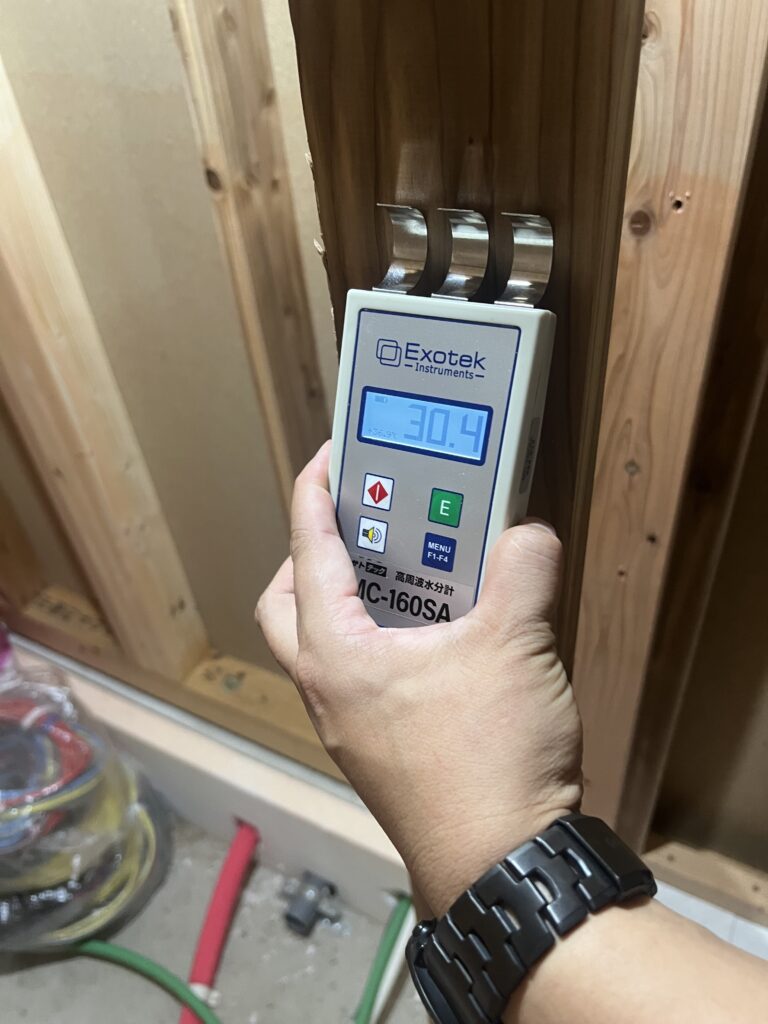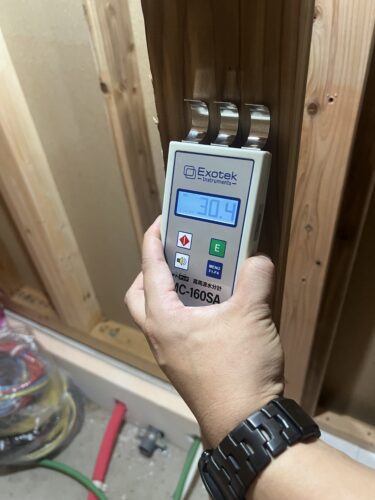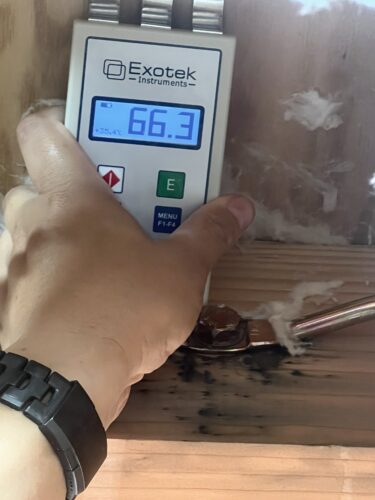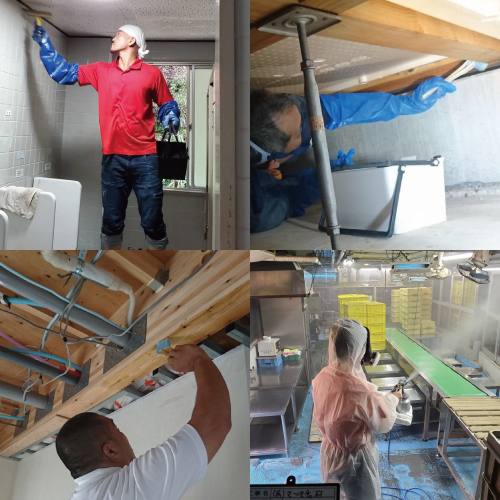Issue raised In high-end villas and welfare facilities in Osaka and the Kansai region, mold grows due to unattended water leaks, causing unpleasant odors, health hazards, and even a decline in the value of the building. This is particularly serious in facilities that house elderly residents and those with weak immune systems. What you will learn by reading this article This article clearly explains how mold grows from water leaks and the health risks that can lead to poor health, and provides an overall picture of specific solutions using the latest technology such as the MIST method®. Benefits of reading this article Owners and people in charge who are struggling with unattended mold problems can quickly learn practical and specialized ways to protect their property values, health, and the environment.
1. Mold Issues in Abandoned Luxury Villas
In the Kansai region, especially around Osaka, luxury villas that are left unoccupied for extended periods often become breeding grounds for mold due to poor ventilation and humidity control. These properties, often located in mountainous or coastal areas, are particularly vulnerable to internal mold growth on walls, ceilings, and furniture. Unchecked mold issues not only damage the appearance but also affect health and property value.
1-1. How Mold Spreads in Unattended Buildings
Mold spores flourish in environments with humidity above 60% and temperatures between 20–30°C. Luxury villas frequently incorporate moisture-absorbent materials such as wood and fabric, creating ideal mold conditions. Especially during Japan’s humid summer and rainy seasons, mold growth accelerates in closets, bathrooms, and ceiling cavities, often without visible signs.
Additionally, unnoticed condensation or leaks through doors and windows can cause mold to thrive inside walls. The longer a property is left unattended, the deeper the mold roots infiltrate the building materials, making removal difficult.
1-2. Odor and Damage to Materials
As mold grows, it emits volatile organic compounds (MVOCs), producing a characteristic musty odor. This odor permeates the air, lingers in clothing and furniture, and is hard to eliminate. Visitors may find the environment unpleasant, which can reduce property value.
Even worse, mold causes physical damage to materials. Wood rots, wallpaper peels, and surfaces discolor, all requiring expensive repairs. Since luxury villas often use imported or natural materials, restoring them can be both costly and technically challenging.
2. How Leaks Lead to Mold and Compounding Damage
Water leaks are one of the most significant contributors to mold outbreaks. Roof damage, plumbing issues, or aging infrastructure often result in undetected water seepage. In seldom-used villas, leaks may go unnoticed until severe damage has occurred.
2-1. The Link Between Moisture and Mold Growth
Water leaks create persistent moisture within wall cavities and insulation, maintaining an environment conducive to mold. Even minor plumbing leaks, especially behind walls or under floors, can trigger hidden mold growth.
Roof leaks caused by aging membranes or poor drainage often occur during storms or rainy seasons. In such conditions, mold growth accelerates dramatically, particularly in insulated cavities that remain wet for prolonged periods.
2-2. Detecting Hidden Leaks Early
Early detection is critical. Look for ceiling stains, peeling wallpaper, warped flooring, or unusual sounds like dripping water. Even subtle signs—such as musty smells or damp sensations—could indicate hidden leaks.
For thorough inspections, use infrared cameras or moisture detectors. Annual professional inspections are highly recommended for high-value properties such as villas or welfare facilities to prevent long-term damage.
3. Mold Odors and Health Hazards
Beyond aesthetics, mold poses serious health risks, especially to the elderly, children, and those with respiratory conditions. Long-term exposure to mold spores and toxins can cause significant health problems.
3-1. Allergies, Asthma, and Respiratory Symptoms
Airborne mold spores can reach deep into the lungs, triggering allergic reactions such as coughing, sneezing, runny nose, itchy eyes, and even chronic conditions like asthma or bronchitis. Vulnerable populations may experience severe symptoms, including fever and breathing difficulties.
In welfare facilities, indoor air quality is paramount. Mold can circulate throughout shared spaces, affecting both residents and staff.
3-2. Mycotoxins and Immune/Organ Impact
Mycotoxins—harmful chemicals produced by mold—can compromise liver and kidney function, weaken the immune system, and even affect the nervous system. Exposure may lead to chronic fatigue or serious internal conditions over time.
Villas sealed for long periods can accumulate high levels of mycotoxins. These are difficult to remove without professional remediation, underscoring the importance of proactive mold management.
4. Mold in Welfare Facilities and Group Homes
Welfare facilities often accommodate vulnerable individuals, making mold prevention critical. Shared bathrooms, kitchens, and bedrooms increase the risk of widespread contamination if mold appears.
4-1. Risks to Elderly and Immunocompromised Individuals
Elderly residents with compromised immune systems are more susceptible to mold-related infections. Mold in damp areas may contribute to bedsores and skin infections, especially among bedridden individuals.
In poorly ventilated environments, mold spores can circulate through HVAC systems, spreading throughout the building and putting all occupants at risk.
4-2. Poor Ventilation and Systemic Contamination
Many welfare facilities lack sufficient ventilation due to sealed windows or disabled exhaust fans. Mold spores trapped indoors can settle on walls, ceilings, and ducts, creating a vicious cycle of contamination.
Aging infrastructure may also harbor leaks or structural dampness, creating hidden breeding grounds. Comprehensive management of air quality and moisture is essential.
5. Climate Conditions and Urban Density in Osaka
Osaka’s humid climate and dense urban layout create an environment ripe for mold. High temperatures and rainfall make mold prevention a constant challenge.
5-1. High Humidity and Seasonal Mold Risks
From June to September, humidity levels soar in Kansai, accelerating mold growth. Luxury homes with airtight construction trap moisture inside, fostering hidden outbreaks.
Salt-laden coastal air also corrodes materials, further increasing moisture retention. Region-specific mold countermeasures are necessary.
5-2. Urban Density and Poor Air Circulation
Tightly packed neighborhoods in Osaka impede airflow, especially between closely built homes. Even with windows open, stagnant air traps moisture indoors.
Many residents disable continuous ventilation systems due to noise or security concerns, unknowingly contributing to mold proliferation. Mechanical ventilation and humidity control must be tailored to the local context.
6. Early Detection and Professional Intervention
Regular inspections and professional assistance are vital for mold prevention. Mold often grows unseen in walls, ducts, and under flooring.
6-1. Spotting Signs of Leaks and Mold
Look for wall stains, ceiling spots, floor warping, or unusual damp smells. These may indicate underlying leaks or active mold growth.
Trusting the intuition of daily users—residents or staff—is crucial. Prompt action can prevent minor issues from escalating.
6-2. The Importance of Fungal Testing
Professional fungal testing analyzes air samples for mold concentration and species. Infrared scanners and scopes help identify hidden infestations.
High-value assets like luxury villas or welfare facilities should undergo annual inspections to ensure safety and prevent costly damage.
7. MIST Method®: Advanced Mold Removal
Unlike traditional methods that only clean the surface, the MIST Method® penetrates deep to eliminate mold at its source, while preserving the building materials.
7-1. No Scrubbing, Just Fine Mist Penetration
The MIST Method® uses a fine mist to infiltrate materials and break down mold cells. No scrubbing means no damage to wood, stone, or fabric finishes. It’s ideal for delicate or high-end interiors.
All chemicals used are certified safe for humans, making them suitable for use in facilities with children or elderly residents.
7-2. Safety and Long-Lasting Results
Each treatment is customized based on the surface material’s pH and composition. The result is deep cleansing without surface damage and months of protection against re-growth.
Following removal, an anti-mold agent is applied to suppress future outbreaks, combining short-term effectiveness with long-term security.
8. Mold Prevention for Villas and Facilities
Post-removal measures are key to maintaining mold-free environments. Facilities and villas need long-term solutions beyond cleaning.
8-1. Antibacterial and Long-Term Surface Treatments
After MIST Method® treatment, a specialized antibacterial spray is applied to prevent mold spores from resettling. These treatments can last from several months to over a year, depending on conditions.
Routine reapplication and periodic assessments keep interiors safe and healthy year-round.
8-2. Real-World Environmental Controls
Good ventilation, dehumidifiers, and air flow optimization are all essential. Set humidity thresholds (ideally under 70%) and monitor moisture-prone areas such as bathrooms and kitchens.
Remote humidity monitors are also available, allowing villa owners to manage environmental conditions from afar.
9. Case Studies from Kansai Region
Learning from successful examples helps others implement similar strategies. The following are real-life cases from welfare facilities and luxury properties in Kansai.
9-1. East Osaka Welfare Facility Case
A welfare facility in East Osaka tackled severe mold growth in the bathing area. MIST Method® removed the mold without harming building surfaces. Residents and staff noticed significant air quality improvement.
The facility then revised its ventilation schedules and introduced regular moisture checks, reducing recurrence.
9-2. Leak Repair and Mold Remediation in a Villa
A luxury villa in Hyogo experienced major mold damage following ceiling leaks. After combining waterproofing repairs with MIST Method® mold removal, the interior was restored without replacing original materials.
Customized solutions addressing both symptoms and root causes proved highly effective.
10. The Value of Mold Control
Effective mold management protects health and preserves property value, making it essential for high-end real estate and shared living environments.
10-1. Benefits for Health and Building Longevity
Mold-free interiors prevent illnesses and reduce maintenance costs. Clean air enhances comfort and satisfaction among residents and guests.
With regular inspections and expert care, buildings can remain in excellent condition for decades.
10-2. Preserving Asset Value
Real estate value hinges on hygiene and usability. Mold issues reduce appeal and raise red flags for buyers. Proactive management boosts marketability and reliability.
Welfare facilities benefit from a mold-free reputation, while villas gain leverage in rental or resale negotiations.





